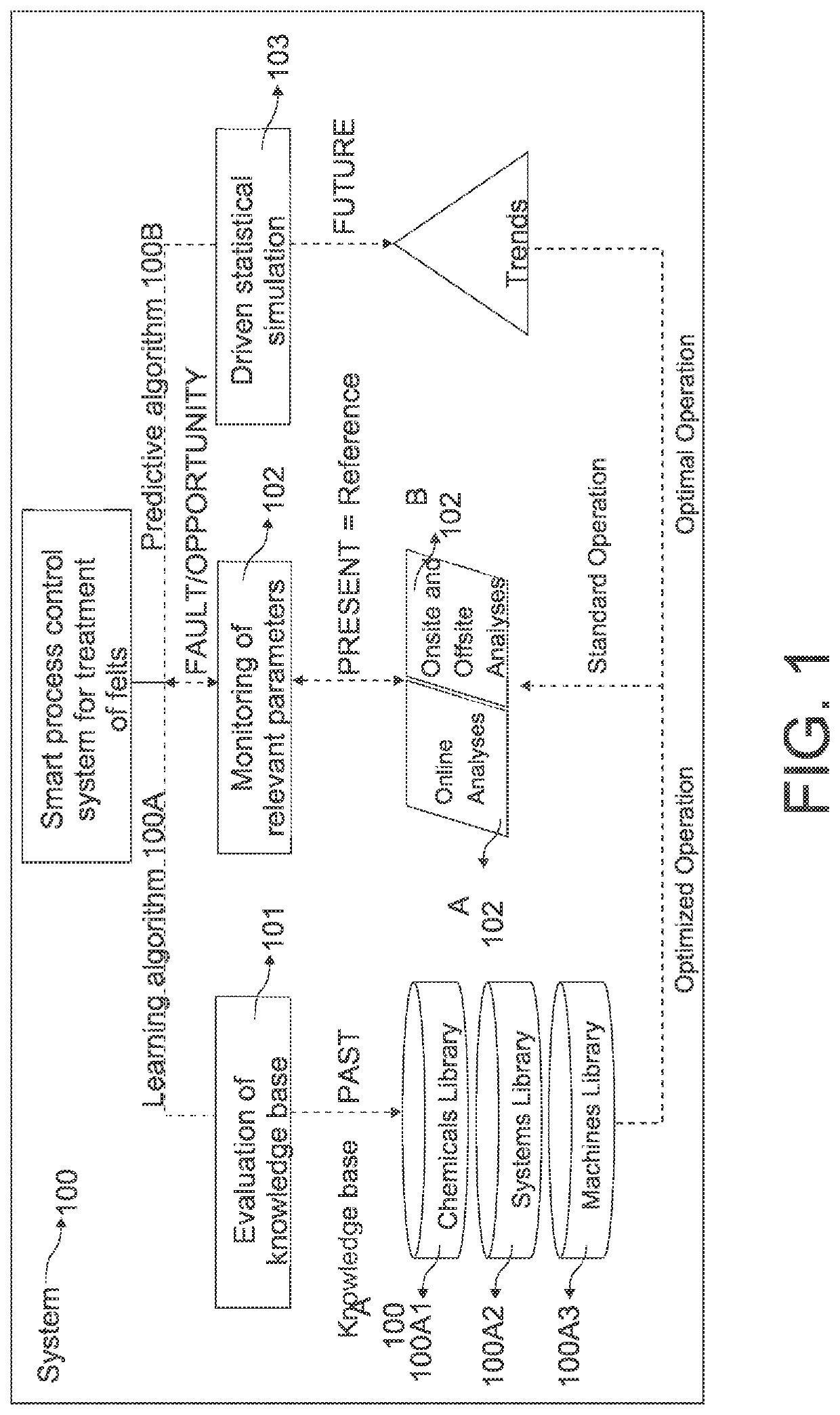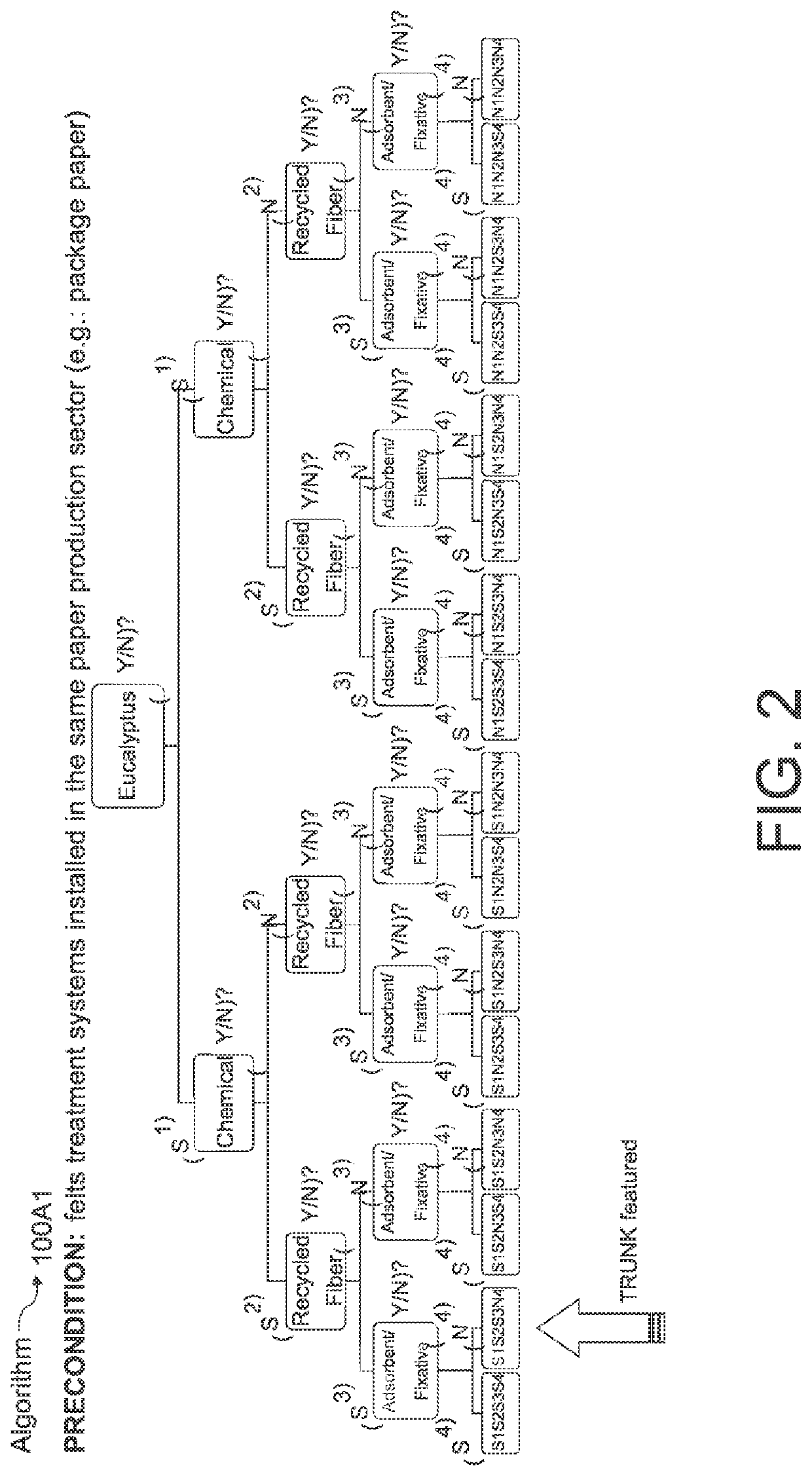Smart process control system for continuous treatment of felts
a technology of process control system and felt, applied in the field of smart process control system, can solve the problems of product quality degradation, product loss, increased production cost, etc., and achieve the effect of reducing application costs and minimizing environmental risks
- Summary
- Abstract
- Description
- Claims
- Application Information
AI Technical Summary
Benefits of technology
Problems solved by technology
Method used
Image
Examples
Embodiment Construction
[0044]The core of this invention Patent application is the smart control system for continuous treatment of clothing, wherein it uses machine learning for enabling automatic decision making on the best chemical and mechanical strategy for application, such as the most suitable temperature and pressure on showers or even selection of the best chemicals for both ongoing and shock applications, their respective dosages, frequency and duration of preventive shock treatments.
[0045]As shown in FIG. 1, said smart process control system 100 is based on three complementary methods that use machine learning techniques, namely:
1. Method 101 of assessment of knowledge base;
2. Method 102 of monitoring of relevant parameters;
3. Method 103 of driven statistical simulation.
[0046]Summarily, the method 101 is capable of looking into historical data in our knowledge base 101A, comprised of information already collected in dozens of treatment systems installed in paper and cellulose machines spread aro...
PUM
 Login to View More
Login to View More Abstract
Description
Claims
Application Information
 Login to View More
Login to View More - R&D
- Intellectual Property
- Life Sciences
- Materials
- Tech Scout
- Unparalleled Data Quality
- Higher Quality Content
- 60% Fewer Hallucinations
Browse by: Latest US Patents, China's latest patents, Technical Efficacy Thesaurus, Application Domain, Technology Topic, Popular Technical Reports.
© 2025 PatSnap. All rights reserved.Legal|Privacy policy|Modern Slavery Act Transparency Statement|Sitemap|About US| Contact US: help@patsnap.com



